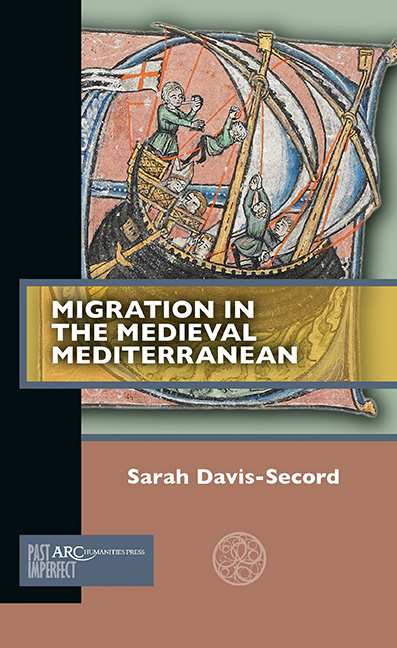Book contents
- Frontmatter
- Contents
- Introduction
- Chapter 1 Refugees from the Islamic Conquests
- Chapter 2 Hadrian and Theodore
- Chapter 3 St. Elias the Younger
- Chapter 4 Constantine the African
- Chapter 5 Jewish Refugees from the Norman Invasion
- Chapter 6 Merchants
- Chapter 7 Imam al-Mazari and Other Muslim Scholars
- Chapter 8 Unnamed Sicilian Girl
- Chapter 9 George of Antioch and Other Immigrants to Sicily
- Chapter 10 Moses Maimonides
- Chapter 11 Religious Converts
- Conclusion
- Further Reading
Chapter 3 - St. Elias the Younger
Published online by Cambridge University Press: 13 January 2022
- Frontmatter
- Contents
- Introduction
- Chapter 1 Refugees from the Islamic Conquests
- Chapter 2 Hadrian and Theodore
- Chapter 3 St. Elias the Younger
- Chapter 4 Constantine the African
- Chapter 5 Jewish Refugees from the Norman Invasion
- Chapter 6 Merchants
- Chapter 7 Imam al-Mazari and Other Muslim Scholars
- Chapter 8 Unnamed Sicilian Girl
- Chapter 9 George of Antioch and Other Immigrants to Sicily
- Chapter 10 Moses Maimonides
- Chapter 11 Religious Converts
- Conclusion
- Further Reading
Summary
Many broad trends in cross-Mediterranean migration are best illustrated by examining the island of Sicily, which sent and received immigrants in all directions across the medieval period. Many of these developments were related to the repeated political and military conquests of the island. From the early sixth century, Sicily was a Greek-controlled island under the dominion of Constantinople, but by the late seventh century, it was experiencing semi-regular attacks along its southern shores launched from Muslim-ruled North Africa. For the first century and a half of these raids, it appears that the attackers were seeking booty and slaves and then returning to North Africa. But after several decades of seaborne attacks, interspersed with periods of diplomatic peace, they turned their attentions to conquest and settlement of the island. And alongside political conquest came significant changes in demographics, some through conquest and settlement, others through emigration and flight from danger.
From the very earliest years of Muslim rule in North Africa, military forays also went out into the Mediterranean Sea. Using the naval fleets that they took over in the conquered Byzantine ports of both Egypt and Ifriqiya (Arabic for “North Africa,” a region roughly equivalent to modern Tunisia and parts of Libya and Algeria), Muslim forces raided the Mediterranean islands of Sicily, Sardinia, Crete, and nearby smaller islands. From possibly as early as the 650s (the dates are disputed), Muslim forces began attacking the southern shores of Sicily. Most of these raids were just that—quick strikes meant to obtain booty and slaves and then return to their home base. We find no evidence in the sources that these earliest assaults were intended to conquer or rule Sicilian territory, although the suspicion is that if they had found it possible to do so they would, indeed, have captured the island. As it was, these raids continued throughout the seventh and eighth centuries and only transformed into an attempt at outright military takeover in 827.
Over the course of the seventh and eighth centuries, Greek Sicily was connected to Constantinople through networks of administration and culture, to European power-centres through military and political communications, to Rome via Church structures, and, at the same time, to Muslim North Africa through these patterns of military raid.
- Type
- Chapter
- Information
- Migration in the Medieval Mediterranean , pp. 29 - 36Publisher: Amsterdam University PressPrint publication year: 2021



